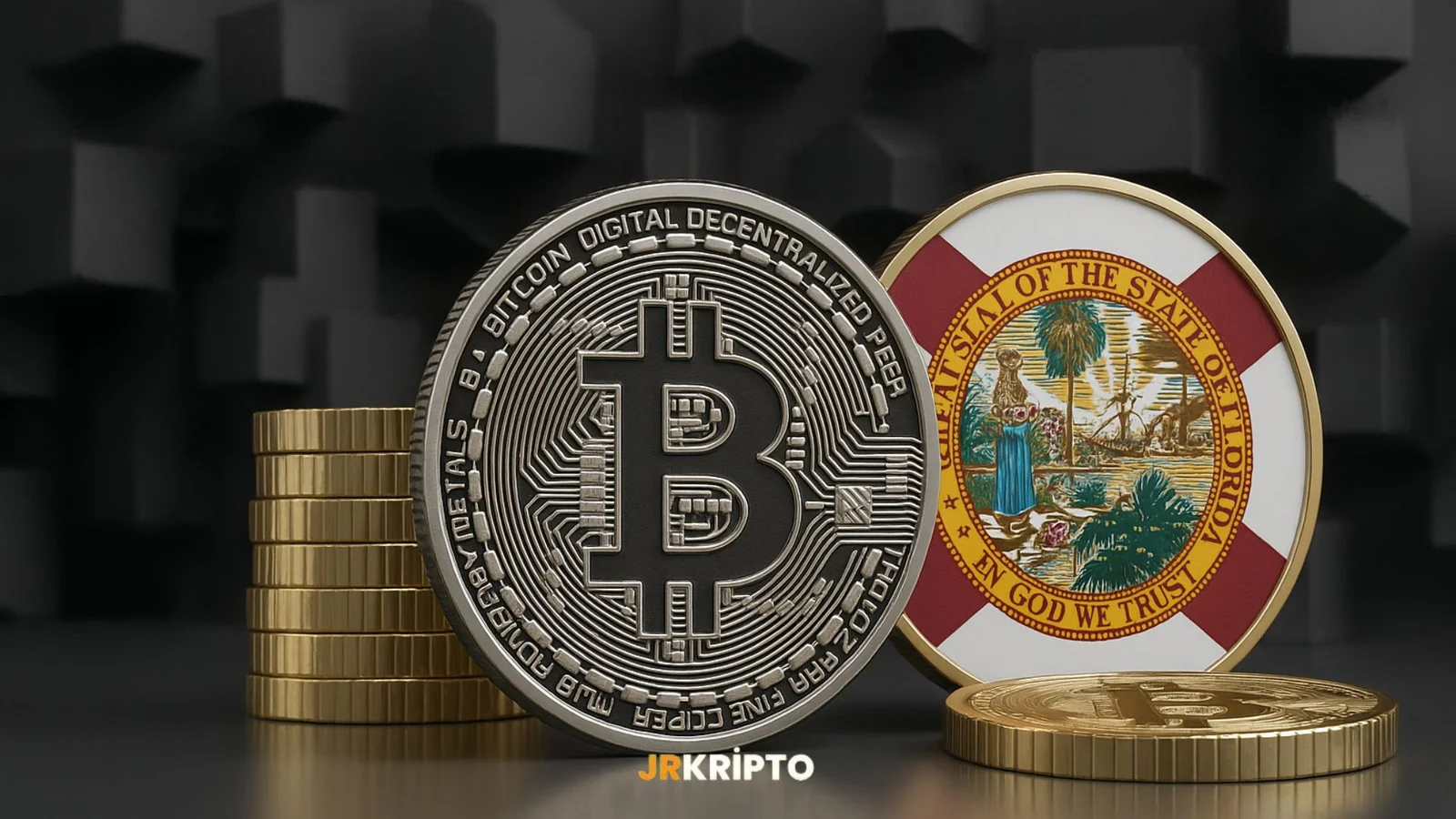News
Regulation News
Regulation News
Browse all Regulation related articles and news. The latest news, analysis, and insights on Regulation.
JPMorgan Accepts Crypto ETFs as Collateral
Institutional Adoption in Crypto Reaches a New MilestoneThe cryptocurrency market has reached a new threshold in institutional adoption. JPMorgan Chase, the largest bank in the United States, has announced that it will now accept Bitcoin ETFs as collateral for loans. This decision not only reflects the bank's shifting stance on crypto assets but also marks a profound transformation in how the traditional financial world approaches digital assets. JPMorgan will initially launch this process with BlackRock’s iShares Bitcoin Trust (IBIT) ETF.This move signals a strategic pivot for JPMorgan, which was previously known for its cautious stance toward crypto. Now, clients can use certain Bitcoin ETFs they hold as collateral to secure financing through the bank. Moreover, this initiative won’t be limited to the United States alone—JPMorgan plans to implement this policy on a global scale.Starting with BlackRock, More ETFs to FollowThe first product JPMorgan will accept as collateral is BlackRock’s IBIT fund. However, according to sources close to the bank, other Bitcoin ETFs are expected to be added to the list over time. The bank will apply this change not only to large institutional investors but also to high-net-worth individual investors.Previously, JPMorgan only approved crypto ETFs as collateral in exceptional cases. With this decision, the bank is expanding its existing collateral policies. Crypto ETFs are now being placed in the same asset evaluation category as traditional assets like stocks, bonds, fine art, or luxury vehicles.Regulatory Shift and Growing Demand Drive the ChangeThere are two key drivers behind this strategic change: the surge in investor demand and the easing of the regulatory environment. Since the Trump administration took office, the SEC has dropped many of its anti-crypto lawsuits and begun fostering a more cooperative relationship with the industry, which has prompted major financial institutions to take action.JPMorgan’s move also indicates that banks in the U.S. are entering a new phase of crypto integration. Crypto assets are no longer just a tool for portfolio diversification—they are now being recognized as legitimate financial instruments that can enhance borrowing capacity.Crypto Moves to the Financial MainstreamJPMorgan’s acceptance of Bitcoin ETFs as collateral clearly illustrates how far institutional adoption has come. Starting with BlackRock’s fund, this trend is expected to expand in the coming months, with more ETFs and more banks joining in. The line between traditional finance and digital assets is becoming increasingly blurred.These developments are transformational not only for crypto investors but for the entire financial system. A major institution like JPMorgan accepting crypto assets as collateral is a clear signal that the digital economy is being taken seriously.

Daily Market Summary with JrKripto 4 June 2025
You can find today’s edition of “Daily Market with JrKripto,” where we compile the most important developments in global and local markets, below. Let’s analyze the overall market conditions together and review the latest insights.Bitcoin (BTC) extended its long-term uptrend from $75,930 to reach an all-time high (ATH) of $111,980. Following this peak, it pulled back due to profit-taking and is currently trading around $105,000. On the technical side, $104,629 stands out as the first major support level. If this area is breached, $101,059 and then $96,115 should be monitored as the next support zones. For the upward recovery to gain traction, it is critical for BTC to surpass the $109,588 resistance. If this resistance is broken, $111,980 and then $114,500 may be targeted once again. Maintaining price action above $104,629 is important to preserve the positive trend.Ethereum (ETH), after starting a strong rally from $1,486 and reaching a peak of $3,004, has entered a correction phase and is currently trading at $2,620. The price holding above the $2,385 support level is helping to limit selling pressure; however, if this level is breached, $2,098 and $2,004 will become the next support zones. For the upward momentum to continue, ETH must break the $2,711 resistance level. Once this is achieved, the targets will be $2,838 and $3,004. The continuation of the positive outlook for ETH hinges on its ability to remain above $2,385.Crypto NewsFed member Bostic said a rate cut this year may be possible depending on the state of the economy.Treasury Secretary Bessent said it’s up to China to decide whether it wants to be a reliable partner.North America-based civil engineering firm SolarBank adopted a Strategic Bitcoin Reserve.Trump is set to launch a branded crypto wallet and trading app encouraging supporters to buy memecoins and other crypto assets.Magic Eden’s $ME partnered with Trump Wallet.Top GainersCOMP → Up 15.2% to $47.60BORG → Up 15.1% to $0.20837302ZBCN → Up 11.2% to $0.0052459ATH → Up 10.6% to $0.05030066APE → Up 9.3% to $0.74851906Top LosersKAITO → Down 9.7% to $1.71POPCAT → Down 9.1% to $0.37289158IOTX → Down 7.6% to $0.02169712FARTCOIN → Down 7.5% to $1.05PENGU → Down 6.8% to $0.01021654Fear IndexBitcoin: 63Ethereum: 54DominanceBitcoin: 63.99% ▼ 0.27%Ethereum: 9.71% ▲ 1.18%Daily Net ETF FlowsBTC ETFs: $375.10 millionETH ETFs: $109.50 millionKey Data to Watch Today15:15 – ADP Non-Farm Employment Change (May)Forecast: 111K / Previous: 60K16:45 – Services Purchasing Managers’ Index (PMI) (May)Forecast: 52.3 / Previous: 50.817:00 – ISM Non-Manufacturing PMI (May)Forecast: 52.0 / Previous: 51.617:00 – Job Openings and Labor Turnover Survey (JOLTS) (April)Forecast: 7.110M / Previous: 7.192M17:30 – EIA Crude Oil InventoriesForecast: -2.900M / Previous: -2.795MGlobal MarketsGlobal stock markets are starting the day on an optimistic note. Expectations for high-level negotiations between the US and China have boosted risk appetite. US stock markets continued to rally, led by tech stocks, with the Nasdaq Index turning positive year-to-date. Yesterday, the Nasdaq rose 0.81%, the S&P 500 increased by 0.58%, and the Dow Jones added 0.51%, all closing in positive territory. The small-cap Russell 2000 Index gained 1.59%, supported by strong performances in regional banks and biotech stocks.Eight of the eleven sectors in the S&P 500 ended the day in the green. The technology sector performed best with a 1.48% gain, followed by energy (1.11%), materials (0.97%), and industrials (0.76%). On the other hand, telecommunications (-0.75%), real estate (-0.39%), and consumer staples (-0.15%) underperformed.On the macroeconomic front, the JOLTS job openings for April came in at 7.40 million, beating expectations of 7.11 million. However, factory orders shrank by 3.7%, exceeding the expected 3.1% decline. Today, the market focus is on the US ADP private sector employment data and the ISM services PMI. The ISM services index rose to 51.6 in April and is expected to increase slightly to 52 in May. Asian markets opened on a positive note, and European markets are also expected to open higher.Meanwhile, the OECD revised its “Global Economic Outlook” downward. The global growth forecast for 2025 was lowered from 3.1% to 2.9%, and the 2026 forecast from 3.0% to 2.9%. The US growth forecast for this year was cut from 2.2% to 1.6%, and the 2026 forecast from 1.6% to 1.5%. The report highlighted that uncertainties in trade policy, tight financial conditions, weakening consumer and business confidence, and rising political risks pose major threats to growth. New tariffs could increase trade costs and fuel inflation, although falling commodity prices might partially offset this.Growth forecasts for Turkey were also revised downward. The OECD cut Turkey’s 2025 growth forecast from 3.1% to 2.9%, and its 2026 forecast from 3.9% to 3.3%. Today, key international data include the US ISM services report, ADP employment report, and Eurozone Services PMI—all closely watched by markets.Top Companies by Market Cap and Stock PricesNVIDIA (NVDA) → $3.45 trillion market cap, $141.22 per share, +2.80%Microsoft (MSFT) → $3.44 trillion market cap, $462.97 per share, +0.22%Apple (AAPL) → $3.04 trillion market cap, $203.27 per share, +0.78%Amazon (AMZN) → $2.18 trillion market cap, $205.71 per share, -0.45%Alphabet (GOOG) → $2.02 trillion market cap, $167.71 per share, -1.56%Borsa IstanbulDomestically, the May CPI came in at 1.53% monthly—closer to our forecast (1.8%) and well below the market expectation (around 2.1%). This result aligns with the Central Bank’s inflation trajectory as outlined in its latest Inflation Report. Consequently, annual inflation dropped 2.5 points from the previous month to 35.4%. Our seasonally adjusted monthly inflation came in at 1.7%, showing about a 1-point improvement from April. Core inflation indicators also declined significantly: the B index annual inflation fell to 34.8%, and the C index to 35.4%. These developments signal continued downward momentum in inflation and improving pricing behavior, though a cautious stance remains warranted.Lower-than-expected inflation has increased the likelihood of a rate cut at the June Monetary Policy Committee (MPC) meeting. This triggered strong buying in banking stocks; yesterday the banking index rose by an average of 5.7%, and the BIST 100 gained 3.0%, closing at 9,277 points. Since the banking sector has underperformed the benchmark index by about 6% year-to-date, it may continue to recover this gap amid rate cut expectations. Additionally, pre-holiday settlement advantages also contributed to yesterday’s strong gains. Market attention is now turning to the June 19 MPC meeting.Technically, the BIST 100 showed a strong rebound after the previous two-day decline, recovering just below the support level. The 9,148–8,965 range remains a key support zone. If the index continues to trade above this band, a move toward 9,475–9,500 could be seen. The 9,325 level serves as interim resistance, and a close above 9,475/9,500 would signal short-term optimism, potentially targeting the 9,740–9,770 resistance area next. Key technical support levels for BIST 100 are 9,148/9,044, 8,965, 8,870, and 8,611; resistance levels are 9,325, 9,475/9,500, 9,588, and 9,740.Overall, a balanced sectoral performance with a continued upward trend is expected in Borsa Istanbul today.Top Companies by Market Cap in Borsa IstanbulQNB Finansbank (QNBTR) → 860.11 billion TL market cap, 260.25 TL/share, +1.36%Aselsan Electronic Industry (ASELS) → 581.86 billion TL market cap, 131.80 TL/share, +3.29%Garanti Bank (GARAN) → 478.8 billion TL market cap, 114.80 TL/share, +0.70%Turkish Airlines (THYAO) → 391.57 billion TL market cap, 284.75 TL/share, +0.35%Koç Holding A.Ş. (KCHOL) → 382.41 billion TL market cap, 149.40 TL/share, -0.93%Precious Metals and Exchange RatesGold: 4,231 TLSilver: 43.18 TLPlatinum: 1,369 TLUSD: 39.13 TLEUR: 44.59 TLSee you again tomorrow with more market updates!

Daily Market Summary with JrKripto 3 June 2025
You can find today’s “Daily Market with JrKripto,” where we compile the most important developments in global and local markets, below. Let’s analyze general market conditions together and take a look at the latest assessments.Bitcoin (BTC), which began its long-term uptrend from $75,930 and reached an all-time high of $111,980, has pulled back to $105,170 due to profit-taking. Technically, $104,629 stands out as the first support level, and if this level is breached, $101,059 and $96,115 will be the next supports to watch. For the upward recovery to gain momentum, breaking above $109,588 is critical. If this resistance is surpassed, $111,980 and then $114,500 could come back into play.Ethereum (ETH) extended its rally from $1,486 up to $3,004 before entering a correction and is currently trading at $2,610. The price is still holding above the $2,385 support, but if it dips below this level, $2,098 and $2,004 will be the next support levels. To continue its upward movement, ETH must break the $2,711 resistance. If this level is breached, $2,838 and $3,004 could be targeted again. Overall, as long as ETH stays above $2,385, the bullish scenario remains valid.Crypto NewsRussia and Ukraine have started second-round peace talks in Turkey.Webus signed a $300 million XRP treasury deal with Samara Alpha.Strategy announced it has purchased 705 BTC.Hong Kong-based Reitar Logtech disclosed to the SEC plans to purchase up to $1.5 billion in BTC to increase reserves and hedge against financial volatility.Michael Saylor’s company Strategy announced an IPO of STRD shares to raise funds for more #Bitcoin purchases.Turkey’s Consumer Price Index for May came in at 1.53% monthly, dropping to 35.41% annually.Top Gainers in CryptocurrenciesSYRUP → Up 16.4% to $0.43140794MKR → Up 16.2% to $1,822.75MOODENG → Up 15.7% to $0.21847194WIF → Up 15.4% to $0.97770381POPCAT → Up 14.1% to $0.40991055Top Losers in CryptocurrenciesDEXE → Down 34.1% to $9.30ZBCN → Down 18.1% to $0.00495409SAROS → Down 4.6% to $0.2013825TAO → Down 4.1% to $392.19VANA → Down 3.9% to $6.68Fear IndexBitcoin: 63Ethereum: 52DominanceBitcoin: 64.05% ▼ 0.31%Ethereum: 9.66% ▲ 0.52%Daily Net ETF FlowsBTC ETFs: -$267.50 millionETH ETFs: $78.20 millionData to Watch TodayTime: 17:00 – Job Openings and Labor Turnover Survey (JOLTS) (Apr)Expectation: 7.110M / Previous: 7.192MGlobal MarketsDespite escalating trade tensions between the US and China, US stock markets closed the day higher. The S&P 500 rose by 0.41%, the Nasdaq by 0.67%, and the Dow Jones by 0.08%. The “Magnificent Seven” tech giants outperformed with a 0.73% gain. Meanwhile, there was selling pressure in the bond market and the US Dollar Index.Rising geopolitical risks, especially the renewed Russia-Ukraine conflict, have pushed investors toward safe-haven assets like gold and silver. Concerns over Russian oil supply also pushed oil prices higher. Seven of the eleven sectors in the S&P 500 posted gains. The healthcare sector (+0.96%) and consumer staples (+0.42%) performed best, while the energy sector lagged behind with a 1.55% loss.The US ISM Manufacturing PMI for May confirmed a slowdown in the economy, falling to 48.5—below the expected 49.5—and remained in contraction territory for the third straight month. Although there was a partial recovery in production and employment components, overall contraction persists. Business leaders noted that tariffs and uncertainty are negatively impacting foreign orders.Meanwhile, positive signals about potential rate cuts have started to emerge from Fed officials. After Governor Waller, Chicago Fed President Goolsbee also stated that a rate cut could be considered if tariff-related uncertainties are resolved.In China, signs of economic slowdown are becoming more apparent. The Caixin Manufacturing PMI dropped to 48.3, well below expectations and the lowest level since September 2022. This weak data has fueled expectations of monetary easing in China, prompting a positive reaction in Asian markets. European markets are expected to open flat but positive today.In the US, factory orders for April and JOLTS job openings data will be closely watched. These reports could provide key insights into the labor market and industrial production.Most Valuable Companies and Stock PricesMicrosoft (MSFT) → $3.43 trillion market cap, $461.97 per share, +0.35%NVIDIA (NVDA) → $3.35 trillion market cap, $137.38 per share, +1.67%Apple (AAPL) → $3.01 trillion market cap, $201.70 per share, +0.42%Amazon (AMZN) → $2.19 trillion market cap, $206.65 per share, +0.80%Alphabet (GOOG) → $2.06 trillion market cap, $170.37 per share, -1.43%Borsa IstanbulDomestic data continues to indicate a slowdown in economic activity. The Istanbul Chamber of Industry’s Turkey Manufacturing PMI came in at 47.2 in May, close to the two-month average, signaling weak domestic and external demand in the manufacturing sector. The stagnation in demand negatively impacted production, employment, and firms’ input purchases, while supplier delivery times continued to shorten. Although exchange rate volatility eased compared to the previous month, it still pressures production costs.According to provisional foreign trade data from the Ministry of Trade, exports in May rose 2.7% year-on-year to $24.8 billion, while imports increased by 2.1% to $31.3 billion. The trade deficit remained steady at $6.5 billion. Seasonally and calendar-adjusted data suggest that the deterioration seen in April was temporary and there was a recovery in the trade balance in May.In consumer sentiment, Bloomberg HT’s Consumer Confidence Index rose by 0.2% to 72.36 in May. Today’s inflation figures from TURKSTAT will clarify May’s inflation outlook. In April, inflation stood at 3.0% monthly and 37.86% annually. Our expectation for May is a 1.8% monthly increase and 35.8% annually. However, market consensus expects monthly inflation to exceed 2%.The BIST-100 index continues to move sideways around the 9,000 level. After sharp declines in banking stocks last Friday, there was a rebound yesterday, with the banking index rising 1.5%, helping the BIST-100 stay above the critical 9,000 mark. According to data released yesterday by the BRSA, the banking sector saw a decline in profitability in April due to rising interest rates. Today’s inflation data will be key for the markets. Additionally, with the upcoming holiday break, investor appetite may increase due to settlement advantages, suggesting a limited upward movement in Borsa Istanbul today.Most Valuable Companies in Borsa IstanbulQNB Finansbank (QNBTR) → 856.76 billion TL market cap, 255.75 TL/share, 0.00% changeAselsan Electronic Industry (ASELS) → 589.61 billion TL market cap, 128.40 TL/share, -0.70%Garanti Bank (GARAN) → 452.76 billion TL market cap, 116.30 TL/share, +7.88%Turkish Airlines (THYAO) → 380.54 billion TL market cap, 282.00 TL/share, +2.27%Koç Holding A.Ş. (KCHOL) → 363.9 billion TL market cap, 149.70 TL/share, +4.32%Precious Metals and Exchange RatesGold: 4,230 TLSilver: 43.12 TLPlatinum: 1,337 TLUSD: 39.20 TLEUR: 44.77 TLSee you tomorrow with more market updates!

Ripple's Stablecoin Gets Green Light from Dubai!
RLUSD, Ripple's enterprise-grade stablecoin, has received approval from the Dubai Financial Services Authority (DFSA) and can now be legally used within the Dubai International Financial Center (DIFC). This opens a new chapter for RLUSD in the Middle East market.Ripple RLUSD will be available in DIFCThe DIFC is a special economic zone established in 2004, where more than 7,000 companies operate today. It is known as an attractive hub for financial and technology companies. Ripple became the first blockchain service provider in this area by obtaining a license from the DFSA last October. Now, the direct integration of RLUSD into the DIFC ecosystem means that the stablecoin can be actively used by companies in the region in areas such as corporate finance transactions, cross-border payments and liquidity management. RLUSD was first launched in December 2024 and received approval from the New York Department of Financial Services (NYDFS) ahead of the launch. Developed under the supervision of the NYDFS, considered one of the most stringent regulatory authorities in the US, RLUSD is backed one-to-one with US Treasuries, bank deposits and cash equivalents. RLUSD is issued natively on both the XRP Ledger and Ethereum networks. Ripple also emphasizes that RLUSD's reserve management is transparently audited, offering confidence to investors and regulators.In a statement in December 2024, Ripple CEO Brad Garlinghouse stated that the launch of the stablecoin under the roof of NYDFS was a conscious strategic choice and said, “In this period when the US is moving towards clearer regulations, we anticipate that the adoption of stablecoins with real use cases and years of trust in the industry, such as RLUSD, will accelerate.”Important names on the advisory boardRLUSD's advisory board includes former Reserve Bank of India Governor Raghuram Rajan and former Boston Fed Vice President Kenneth Montgomery. They are leading the project alongside other prominent figures in the financial world, such as former FDIC Chair Sheila Bair and Ripple co-founder Chris Larsen.RLUSD is traded on many exchangesRipple's US dollar-backed stablecoin has already expanded its reach by being listed on various cryptocurrency exchanges since its launch in December 2024. RLUSD was initially traded on platforms such as Uphold, Bitso, MoonPay, Archax and CoinMENA, and has since been added to exchanges such as Bullish, Bitstamp, Mercado Bitcoin, Independent Reserve and Zero Hash. As of 2025, RLUSD is supported on exchanges such as Bitget, Gemini, Kraken, LMAX Digital, B2C2, Keyrock and JST Digital. Other platforms such as Revolut, Banxa, B2C2, Keyrock, Flowdesk also support RLUSD.

Rumors Came to Naught: Powell is on Duty, the Market Is on Hold
Investors’ eyes were on Fed Chair Jerome Powell’s speech today. This speech, which was added to the calendar later, sparked great curiosity, especially at a time when expectations for interest rate cuts are strengthening. Rumors that emerged in the last 24 hours about Powell’s possible resignation further increased the importance of the meeting.Powell Spoke, But Gave No SignalAccording to the speech text published on the Fed’s website, Powell, in his opening remarks at the event, only made statements about the history and mission of the International Finance Division. There was no message regarding interest rate cuts, nor any hint about resignation.Since the content of the speech included no comments about the Fed’s monetary policy or economic outlook, the “guidance” that the markets were expecting did not materialize. This made the impact of the speech on the market limited, contrary to expectations.Resignation Rumors Proven FalseThere is no reference to the resignation claims in Powell’s speech. This shows that, for now, the rumors are baseless. In fact, this situation is positive for all risk asset classes, especially the crypto markets. Because Powell remaining in office carries critical importance for institutional continuity at the Fed.The sudden resignation of a Fed chair could create distrust in the markets and could have posed a pressure factor, particularly for cryptocurrencies that are prone to volatility.Goolsbee: “Inflation Reports Are Excellent, But There’s Uncertainty”Recent statements by Fed member Austan Goolsbee also drew attention. Goolsbee said that the inflation data received so far is excellent but that it’s hard to predict whether this outlook will continue over the next 1–2 months. Especially the new tariffs brought to the agenda by the Trump administration could create economic uncertainties that may be a significant obstacle in the Fed’s decision-making process.Tariffs and the Fed’s PositionStatements from the White House indicated that the European Union came to the negotiating table under President Trump’s customs tariff pressure and that a meeting with Chinese President Xi could take place this week. However, until the uncertainty brought by these tariffs is fully eliminated, it seems that the Fed will not be in a hurry to cut interest rates.Markets Still Watching Interest RatesAccording to the latest statements, no clear schedule for a rate cut should be expected from the Fed in the short term. However, current economic indicators (such as PMI data) are increasing the possibility of a recession, so the likelihood of rate cuts beginning as of July still remains strong.Calm for Now, But Summer Could Be ActiveIt has now become clear that Powell is not resigning, and that his speech did not contain any concrete message regarding monetary policy. However, statements from Fed members and market data point out that interest rate cuts could be taken more seriously starting from July. For now, the “wait-and-see” mode continues for the crypto markets and other risk assets.
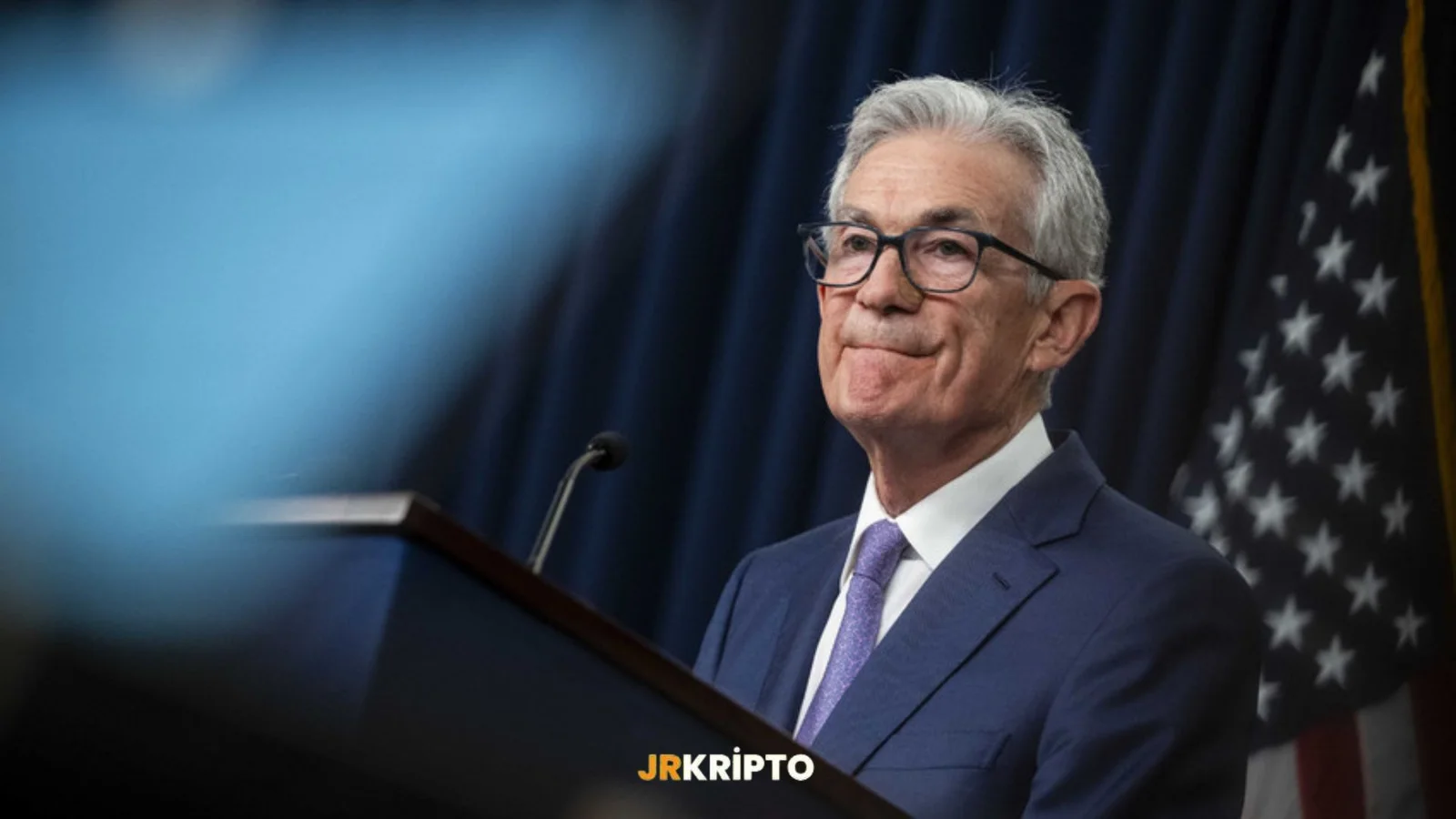
Signals Become Clear Before Powell Speech: Rate Cut Is Approaching
Latest PMI Data from the U.S. Confirms Economic Slowdown, but Markets Focus on Fed Rate CutsWhile the latest PMI data from the U.S. confirms a slowdown in economic activity, a more critical agenda has emerged for the markets: when the Federal Reserve will begin cutting interest rates. Fed Chair Jerome Powell, who is set to speak today at 8:00 PM, could largely shape the tone of the response to this question.What Do the Data Show?The S&P Global Manufacturing PMI, released on June 2, came in at 52.0, falling short of the 52.3 expectation. Shortly after, the ISM Manufacturing PMI dropped to 48.5, remaining below the 50 mark and indicating continued contraction in the manufacturing sector.When combined, these two indicators signal a slowing economy. However, what markets are focusing on is something else: these weak data points are further strengthening the case for rate cuts.What Are Markets Expecting?The weakening economic activity is prompting thoughts that the Fed should act without further delay. Analysts and investors now have a clearer view that interest rate cuts could begin as early as July.Following the data, U.S. Treasury yields declined, while interest in risk assets began to rise again—suggesting that markets are viewing the rate cut scenario positively.All Eyes on Powell: Key Messages Expected at 8:00 PMJerome Powell’s statements this evening are crucial not only for the current economic outlook but also for guiding the Fed’s interest rate policy.Expectations are clear: Powell may adopt a more dovish tone in light of the incoming data. This would mean that rate cuts are no longer just a possibility but are becoming a strong scenario.A New Era May Begin in JulyThe dominant scenario in the markets is that gradual rate cuts could begin with the July meeting. The likelihood that these cuts will continue in subsequent meetings throughout the remainder of the year is also increasing.In particular, the relative stabilization in inflation and the slowdown in economic activity are strengthening the Fed’s hand in moving toward rate reductions.
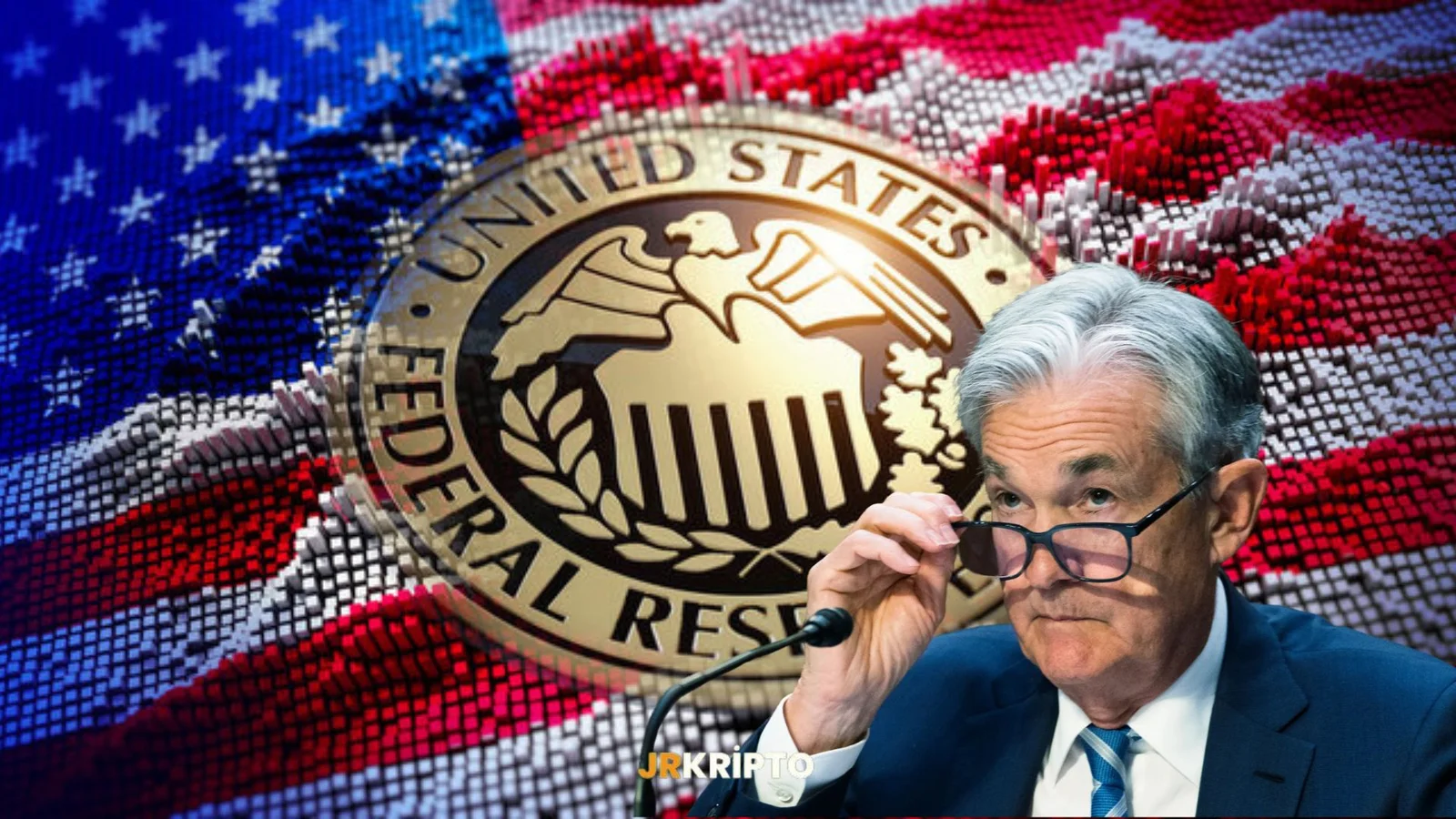
Daily Market Summary with JrKripto 2 June 2025
You can find today’s “Daily Market with JrKripto,” where we compile the most important developments in global and local markets, below. Let’s analyze the general market conditions together and take a look at the latest evaluations.Bitcoin (BTC) started its upward trend from the $75,930 level and carried it to an all-time high (ATH) at $111,980, then pulled back due to profit-taking and is currently trading at $104,671. In the technical outlook, the $104,629 level is being followed as the first support, while below this level, support levels are located at $101,059 and $96,115. For the upward movement to regain strength, the $109,588 level needs to be surpassed. If it can stay above this resistance, $111,980 and $114,500 may be targeted.Ethereum (ETH), on the other hand, extended its upward movement from the $1,486 level to $3,004, then pulled back to $2,481 with the subsequent correction. Technically, the $2,385 level is an important support. Below this level, there are support levels at $2,098 and $2,004. For the continuation of the upward movement, the $2,711 resistance needs to be surpassed. Once this level is broken, the $2,838 and $3,004 levels may become targets again. Overall, ETH is in a horizontal consolidation phase, and holding above $2,385 is critical for the continuation of the positive scenario.Crypto NewsSHARPLINK GAMING has applied for a $1 billion IPO and plans to use the proceeds to purchase Ethereum.Cetus confirmed that the quarantined funds on Sui have been moved to a multisig safe wallet. The funds will remain secure until they are returned to users.WH Senior Advisor Hassett: Trump is considering a phone call with Chinese President Xi this week.U.S. Commerce Secretary Lutnick said tariffs “will not be lifted.”Elon Musk announced that X has launched its new 'XChat' messaging system with "Bitcoin-style" encryption.Top Gaining Cryptocurrencies:MASK → Up 27.8% to $2.57INC → Up 27.3% to $0.03161628KTA → Up 18.6% to $0.95564181AI16Z → Up 13.3% to $0.23943525FLR → Up 10.7% to $0.01914012Top Declining Cryptocurrencies:TKX → Down 6.6% to $31.52LPT → Down 6.2% to $8.27RAY → Down 4.8% to $2.36PLUME → Down 4.7% to $0.12862161GIGA → Down 3.7% to $0.02157426Fear Index:Bitcoin: 59Ethereum: 38Dominance:Bitcoin: 64.51% ▲ 0.05%Ethereum: 9.36% ▼ 0.52%Daily Net ETF Flows:BTC ETFs: -$616.10 MillionETH ETFs: $70.20 MillionKey Data to Watch TodayTime: 16:45 – Manufacturing Purchasing Managers Index (PMI) (May)Expectation: 52.3Previous: 50.2Time: 17:00 – ISM Manufacturing PMI (May)Expectation: 49.3Previous: 48.7Time: 20:00 – Fed Chair Powell’s SpeechGlobal MarketsU.S. stock markets opened sharply lower after President Donald Trump accused China of violating trade agreements. However, they managed to recover most of their losses by the end of the day. This rebound was driven by lower-than-expected April personal consumption expenditures (PCE) data and positive results in the University of Michigan consumer confidence survey.According to PCE inflation data, annual headline inflation dropped to 2.1%, and core PCE inflation, excluding food and energy, fell to 2.5%—the lowest since February 2021. Monthly inflation stood at 0.1%, in line with expectations. While service prices saw limited increases, the downward trend in goods prices ended with a 0.1% rise. The rise in disposable income was driven by social security payments.As a result, the S&P 500 index closed flat with a marginal 0.01% drop, the Nasdaq declined by 0.32%, and the Dow Jones rose by 0.13%. Eight of the 11 sectors in the S&P 500 closed higher, with consumer staples and utilities leading gains, while energy, consumer discretionary, and tech sectors declined.As the new week begins, trade tensions between the U.S. and China continue to escalate. China rejected Trump’s accusations and argued that the U.S. was the one violating the agreement. These developments created selling pressure in Asian markets and U.S. futures, and European markets are also expected to open lower.Meanwhile, expectations regarding the Federal Reserve’s interest rate policy have shifted slightly. While tariff policies may exert upward pressure on inflation, markets are now pricing in a total of 50 basis points in rate cuts for September and December.The University of Michigan’s consumer sentiment index for May was revised upward from the previous estimate of 50.8 to 52.2, marking a pause in the four-month decline. The index is still 24% lower than the same period last year. Short-term inflation expectations rose slightly to 6.6%, while 5-year long-term expectations declined from 4.4% to 4.2%.On the Chinese side, economic data signaled a recovery. The manufacturing PMI rose from 49.0 to 49.5 in May, slowing the contraction. The non-manufacturing PMI, covering services and construction, came in at 50.3, just above the growth threshold.Most Valuable Companies and Stock PricesMicrosoft (MSFT) → $3.42 Trillion market cap, $460.36 per share, up 0.37%NVIDIA (NVDA) → $3.3 Trillion market cap, $135.13 per share, down 2.92%Apple (AAPL) → $3 Trillion market cap, $200.85 per share, up 0.45%Amazon (AMZN) → $2.18 Trillion market cap, $205.01 per share, down 0.34%Alphabet (GOOG) → $2.09 Trillion market cap, $172.85 per share, down 0.06%Borsa Istanbul (BIST)In Q1 2025, the Turkish economy grew by 2% compared to the same period last year, and 1% on a quarterly basis. This growth was slightly below market expectations of 2.5% and the institutional forecast of 2.3%. The main driver was household consumption. Thanks to favorable credit conditions before the interest rate hike, consumption increased by 2% annually, contributing 1.6 percentage points to growth. Public spending rose by 1.2%, adding 0.2 points, and investments (fixed capital formation) grew by 2.1%, also contributing 0.2 points. However, while exports remained flat, a 3% rise in imports pulled growth down by 0.6 points. Growth was sustained by domestic demand in Q1, but this momentum is expected to weaken in Q2. We believe there are increasing downside risks to our 2025 growth forecast of 3.1%, and that growth may fall below 3%.In the labor market, negative developments were seen. In April, the seasonally adjusted unemployment rate rose from 8% to 8.6%, the highest since November 2024. The broader underemployment rate hit a record high, rising from 28.8% to 32.2%. The combined rate of time-related underemployment and unemployment rose to 22.5%, while the rate of unemployed and potential labor force remained at 20%. This sharp increase is thought to be partly due to temporary unemployment of daily wage workers during the holiday period.Price increases also continued. According to Istanbul Chamber of Commerce data, retail prices rose by 2.83% monthly and 46.57% annually in May. According to TÜRK-İŞ, the hunger threshold increased by 4.39% to 25,092 TL in May. The Ministry of Treasury and Finance will make domestic debt payments totaling 581.6 billion TL between June and August. In June, a borrowing of 278.9 billion TL is planned against payments of 265.6 billion TL.The Financial Stability Report published by the Central Bank indicated a shift in commercial loans in favor of TRY since March. Due to high commercial loan interest rates, credit growth is expected to remain moderate, and firms’ financial positions are generally considered manageable.Last week’s decline in Borsa Istanbul was driven especially by selling in banking stocks. The BIST-100 index dropped below 9,000 points during the session but closed slightly above that level. The Capital Markets Board (SPK) extended regulations on short selling bans, share buybacks, and margin trading until July 4. These measures are expected to provide short-term support to the market. However, due to settlement advantages during the holiday, some investors may still opt to sell. Tomorrow’s inflation data from TURKSTAT will be important; market expectation is around 2% monthly. The BIST-100 is expected to start the week with a flat movement above 9,000 points.Most Valuable Companies on Borsa IstanbulQNB Finansbank (QNBTR) → 867.65 Billion TL market cap, 258.50 TL per share, down 0.19%Aselsan Elektronik Sanayi (ASELS) → 590.98 Billion TL market cap, 130.00 TL per share, up 0.31%Türkiye Garanti Bankası (GARAN) → 444.78 Billion TL market cap, 107.70 TL per share, up 1.70%Türk Hava Yolları (THYAO) → 377.08 Billion TL market cap, 273.25 TL per share, no changeKoç Holding A.Ş. (KCHOL) → 359.34 Billion TL market cap, 140.40 TL per share, down 0.92%Precious Metals and Exchange RatesGold: 4,181 TLSilver: 41.93 TLPlatinum: 1,326 TLUSD: 39.26 TLEUR: 44.67 TLSee you again tomorrow with the latest updates!

SEC Puts Staking Services Under the Spotlight: New Regulatory Lines Are Becoming Clearer
The U.S. Securities and Exchange Commission (SEC) Has Released New Guidance on Staking—A Long-Awaited Move for the Crypto IndustryThe document brings important changes for both individual investors and platforms in the crypto space. A more nuanced approach is now in place—depending on who is doing what.No Action Against Those Staking Their Own AssetsAccording to the SEC’s statement, individuals staking their own crypto assets—such as by connecting to a proof-of-stake (PoS) network to earn rewards—will not be considered as engaging in securities activity. In other words, there is no regulatory risk for users who stake on their own behalf and serve as validators on the network. Since no one else’s funds are being taken or managed, the SEC does not intervene. This is a notably reassuring development for individual users.But It’s a Different Story for PlatformsThings change when it comes to platforms offering staking services. Systems that take users’ funds, stake them on their behalf, manage rewards, and sometimes automatically re-stake—these are squarely on the SEC’s radar.The Commission clearly stated that such services could be considered “securities offerings.” This means that exchanges and service providers involved in these activities may need to register with the SEC and ensure proper disclosure to investors. The extent to which users lose control over their assets is now a much more critical factor.Not Just Staking—Tokenization Is Also in FocusThe SEC’s published document doesn’t only address staking. It also focuses on the tokenization of assets—transferring traditional assets onto the blockchain. One of the discussions on this topic took place with Payward (Kraken’s parent company). The new SEC leadership aims to establish more dialogue with the industry and prioritize clarity over strict enforcement. This aligns with the approach of Paul Atkins, the new SEC chairman appointed after Trump’s return: “Encourage compliance, not punishment.”The Nature of the Activity Matters—But Who Does It Matters Even MoreThe SEC’s message is clear: the same staking activity can have different legal implications depending on who is performing it. For those doing it on their own behalf, there is no issue. But those doing it on behalf of others now carry significant legal responsibilities. The crypto industry is maturing, and in the process, things are becoming clearer. Everyone must better understand—and explain—what they are doing and for whom.
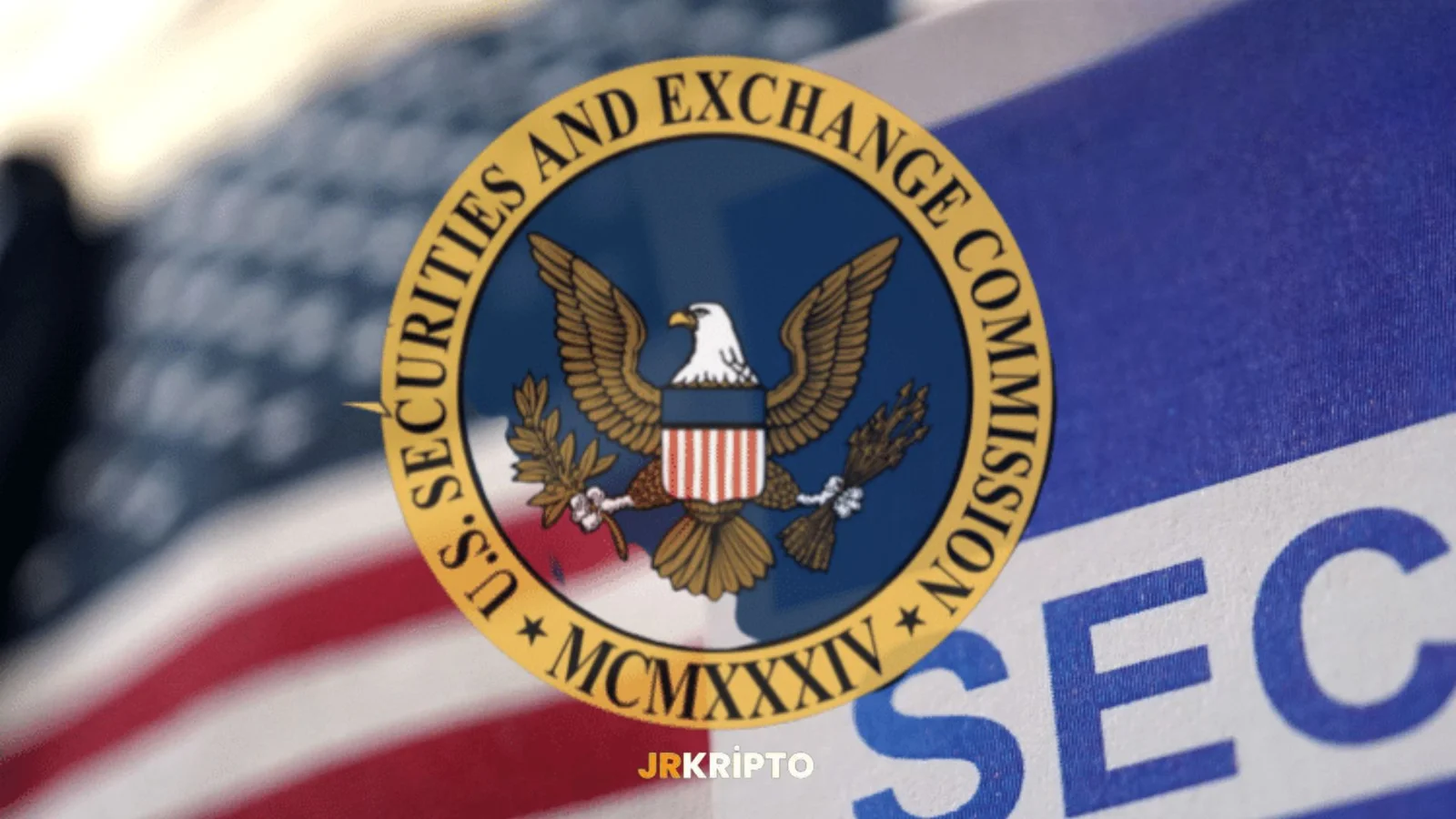
SEC Drops Binance Case: Crypto Wind Reverses in Washington
The Most Controversial Crypto Case in the U.S. Has Been Closed: SEC Drops the Binance LawsuitThe U.S. Securities and Exchange Commission (SEC) has stepped back from its nearly two-year-long legal battle against Binance. On May 29, a joint motion was filed to dismiss the case entirely. This is not just a legal conclusion—it signals a significant shift in how the U.S. views crypto.How Did the Lawsuit Begin?In June 2023, the SEC filed a lawsuit against Binance, its founder Changpeng Zhao, and its U.S. affiliate BAM Trading, accusing them of misleading investors and mismanaging customer funds. For a long time, the case was seen as a major blow to the crypto market.During this process, Binance reached a settlement with the Department of Justice, agreeing to pay a $4.3 billion fine. Zhao stepped down as CEO, pleaded guilty to money laundering charges, and was sentenced to four months in prison.What Changed?As of May 2025, the SEC officially announced its intention to drop the case. SEC officials stated, “This case is no longer a priority for the agency,” and requested that the proceedings be terminated. Notably, they are seeking to close the case “with prejudice”—meaning it cannot be reopened.Binance welcomed the move as “a major victory for crypto” and specifically thanked the Trump administration and new SEC Chairman Paul Atkins.Trump and the New SEC: A Different PathThis development clearly reflects a shift in crypto policy in Washington. With Paul Atkins—former crypto advisor—appointed as SEC Chairman, the agency is opting for dialogue with the industry over harsh enforcement actions.It’s not just Binance… Proceedings involving companies like Coinbase, Kraken, Circle, and OpenSea have also either been concluded or shelved. The new approach prioritizes “finding common ground over confrontation.”What Does It Mean?The dismissal of the case is obviously a positive outcome for Binance. But more importantly, it signals a new chapter in the U.S.'s crypto policy. The easing of regulatory pressure gives entrepreneurs and investors room to breathe.The U.S. is moving toward a more balanced stance on digital assets. This means clearer rules, reduced uncertainty, and more open communication in the near future.For the first time, the crypto industry now has a real chance to sit at the same table with regulators.

Daily Market Summary with JrKripto 30 May 2025
You can find today’s “Daily Market Update with JrKripto,” where we’ve compiled the most important developments from global and local markets, below. Let’s analyze the general market conditions together and review the latest updates.Bitcoin (BTC) is currently trading at $105,400. The long-term uptrend that began at $75,930 gained momentum after breaking through the resistance levels at $101,059 and $104,000, eventually reaching an all-time high (ATH) of $111,880. However, following profit-taking at this peak, BTC has broken below the $108,000 support level and is currently trading below it. This pullback signals a short-term bearish outlook, with $104,629 serving as intermediate support and $101,059 as a stronger support zone. In potential upward recoveries, the first resistance lies again at $108,000. If this level is breached, $111,000 and subsequently $114,500 could be targeted. However, to maintain its upward trend, it is critical for BTC to establish support above the $108,000 level.Ethereum (ETH) is currently trading at $2,610. The upward movement that began at $1,486 pushed the price above resistance levels at $2,453 and $2,595, reaching as high as $2,720. However, selling pressure from this region has dragged ETH back below the $2,595 level. The current price action points to a short-term correction. If the downward movement continues, $2,453 and $2,095 will serve as support levels. In case of upward recovery, $2,595 is once again the initial resistance. If surpassed, the next potential targets would be $2,800 and $2,981. For ETH’s positive outlook to regain strength, maintaining support above $2,595 is crucial.Crypto NewsBybit has obtained a MiCA license in Austria.Telegram raised $1.7 billion through convertible bonds to repay existing debt.Fed member Goolsbee: If tariffs are avoided through a deal or otherwise, we could return to a rate-cutting scenario.Bitcoin treasury firm Twenty One, backed by Tether, raised its total funding to $685 million following a second bond sale.White House: Trump told the Fed chair that not cutting rates is a mistake.The SEC Crypto Task Force met with Payward to discuss tokenization of traditional assets and staking services.SEC has dropped its lawsuit against Binance.Nigel Farage, leader of the UK Reform Party, will introduce a Strategic Bitcoin Reserve bill.Top Gainers:LPT → Up 86.7% to $10.45VENOM → Up 16.7% to $0.12698581SAFE → Up 13.0% to $0.67709936DEXE → Up 12.6% to $14.10ZBCN → Up 12.0% to $0.00621744Top Losers:PNUT → Down 20.6% to $0.27233779SYRUP → Down 16.9% to $0.34540183MOG → Down 16.2% to $0.00000101OM → Down 16.0% to $0.32981439DOG → Down 15.8% to $0.00441292Fear Index:Bitcoin: 66Ethereum: 60Dominance:Bitcoin: 63.96% ▲ 0.40%Ethereum: 9.64% ▼ 0.07%Daily Net ETF Flows:BTC ETFs: -$346.80 MillionETH ETFs: $91.90 MillionKey Economic Data to Watch Today:15:30 – Core Personal Consumption Expenditures (PCE) Price Index (YoY, April)Forecast: 2.5%Previous: 2.6%15:30 – Core PCE Price Index (MoM, April)Forecast: 0.1%Previous: 0.0%Global MarketsU.S. stock indices opened strong thanks to Nvidia’s solid financial results and the U.S. International Trade Court’s decision to block tariffs imposed by President Donald Trump. However, profit-taking occurred during the day after a federal appeals court temporarily halted this decision. Still, the indices closed higher: S&P 500 up 0.40%, Dow Jones up 0.28%, and Nasdaq up 0.39%.Ten out of eleven S&P 500 sectors ended the day in positive territory, with the best performers being real estate (+0.95%), healthcare (+0.74%), and infrastructure (+0.69%). Telecommunications was the only sector to close lower (-0.35%). Nvidia shares rose 3.2%.On the macroeconomic front, the U.S. economy contracted at an annualized rate of 0.2% in Q1 2025. While this is less than the initial estimate of -0.3%, it marks the first economic contraction since 2022. The upward revision was mainly due to stronger-than-expected investment spending. However, personal consumption grew only 1.2%, the lowest rate since Q2 2023. Government spending fell by 4.6%, the sharpest decline since 2022. Fixed investment rose 7.8%, and exports grew 2.4%. Imports surged 43%, suggesting that consumers and businesses pulled forward demand ahead of high tariffs.Initial jobless claims in the U.S. rose by 14,000 to 240,000 for the week ending May 24 (forecast: 230,000). The four-week moving average dropped by 250 to 230,750. Continuing claims rose by 26,000 to 1.92 million for the week ending May 17.Today, the markets are focused on April’s PCE inflation data, closely monitored by the Fed. The forecast is for monthly inflation to rise 0.1% and annual inflation to increase to 2.2% from 2.3% in March. Additionally, preliminary CPI data from Germany for May, U.S. personal income and spending, trade balance, and the University of Michigan’s final consumer sentiment index will be released. German CPI is expected to continue its gradual decline.Asian indices opened slightly lower this morning, while European indices began the day in positive territory. Although trade policy uncertainty continues to cap gains, Nvidia’s strong results and today’s U.S. inflation data remain in sharp focus.Top Companies by Market Value and Stock PricesMicrosoft (MSFT) → $3.41 trillion market cap, $458.68 per share, up 0.29%NVIDIA (NVDA) → $3.4 trillion market cap, $139.19 per share, up 3.25%Apple (AAPL) → $2.99 trillion market cap, $199.95 per share, down 0.23%Amazon (AMZN) → $2.18 trillion market cap, $205.70 per share, up 0.48%Alphabet (GOOG) → $2.09 trillion market cap, $172.96 per share, down 0.24%Borsa IstanbulAccording to final data released by TURKSTAT, Turkey’s foreign trade deficit in April stood at $12.1 billion—close to the provisional figures earlier released by the Ministry of Trade. In the same period, exports increased 7.8% year-over-year to $20.8 billion, while imports rose 12.7% to $32.9 billion. As a result, the trade deficit for the first four months of 2025 reached $34.6 billion, a 14.7% increase compared to the same period last year. The 12-month rolling trade deficit reached $86.7 billion, the highest since June 2024.Important domestic data releases are expected today. April’s unemployment rate, Q1 2025 GDP figures, and the Central Bank’s Financial Stability Report will be published. In Q4 2024, Turkey’s economy grew 3.0% annually and 1.7% quarter-on-quarter (seasonally and calendar-adjusted). For Q1 2025, annual growth is expected to be around 2.0%.The BIST-100 index is trying to find support just below the 9,200 mark—near its lowest dollar-based level in a year. Since the beginning of the month, the banking, telecommunications, and energy sectors have shown strong performance, while chemical, cement, aviation, retail, and insurance sectors have remained weak. Today, GDP data will be released at 10:00 a.m., followed by the Central Bank’s Financial Stability Report at 10:30 a.m. Next Tuesday, May’s inflation figures will be published. Forecasts suggest monthly inflation around 2.0%. A flat trading day is expected on BIST-100.Technically, the BIST-100 index tested 9,265 intraday yesterday before pulling back and closing at 9,171. The index is trying to hold above the previous support band of 9,148–9,044. While rebound attempts remain weak, efforts to stabilize in this zone may continue. If not, further weakness could follow. A close above 9,475 would signal renewed optimism. Intermediate resistance levels are at 9,224 and 9,325, while strong resistance lies at 9,475/9,500, 9,588, and 9,740/9,760. Support zones are at 9,148, 9,074/9,044, 8,984, 8,872, and 8,618.Top Companies by Market Value on Borsa IstanbulQNB Finansbank (QNBTR) → 886.08 billion TL market cap, 264.50 TL per share, no changeAselsan Electronic Industries (ASELS) → 602.83 billion TL market cap, 129.30 TL per share, down 2.19%Garanti Bank (GARAN) → 460.32 billion TL market cap, 106.10 TL per share, down 3.19%Turkish Airlines (THYAO) → 384.33 billion TL market cap, 277.00 TL per share, down 0.54%Koç Holding A.Ş. (KCHOL) → 362.63 billion TL market cap, 143.50 TL per share, up 0.35%Precious Metals and Exchange RatesGold: 4,152 TLSilver: 41.81 TLPlatinum: 1,361 TLUSD: 39.22 TLEUR: 44.58 TLSee you again tomorrow with the latest updates!

Circle Goes PUBLIC: BlackRock Plans to Take a 10% Stake
USDC Issuer Circle Joins Forces with Wall Street Giants in Public OfferingCircle Internet Financial, one of the most recognized companies in the cryptocurrency sector, has officially launched its public offering process on the New York Stock Exchange (NYSE). The company announced that it plans to offer 24 million Class A common shares under the ticker symbol “CRCL.” This development marks a significant milestone not only for Circle but also for the broader integration of the crypto industry into traditional financial markets.IPO Plan: 24 Million Shares, $624 Million TargetAs part of the IPO, Circle will offer a total of 24 million Class A shares—9.6 million directly from the company and 14.4 million from existing investors. The expected share price range is between $24 and $26. This would bring the company’s total valuation to approximately $5.65 billion, or around $6.7 billion when including public option shares.Circle aims to raise a total of $624 million through this public offering. However, the most critical aspect of this process is the quality of the investor profile.BlackRock’s Strategic Move: Aiming for 10% of SharesThe world’s largest asset manager, BlackRock, plans to purchase roughly 10% of the shares offered in Circle’s IPO. This is a significant development not only in terms of financial scale but also in its symbolic value. BlackRock’s interest signals that the stablecoin market is starting to gain serious traction in institutional finance.This move confirms that Circle has become a respected financial actor, both for its technological infrastructure and its regulatory compliance efforts. Following BlackRock, Ark Investment Management also announced plans to purchase $150 million worth of shares in the IPO.Strength from USDC: Circle’s Market PositionAs the issuer of the USDC stablecoin, Circle holds a critical position in the global digital asset market. As of May 28, USDC had a circulating supply of $60.9 billion, representing 24.6% of the global stablecoin market. This makes USDC the second-largest stablecoin after Tether.USDC’s stability, transparency in reserves, and regulatory-friendly structure have made Circle a reliable partner for institutional investors.IPO: A Step Toward Capital and InstitutionalizationCircle’s public offering is not just a financial growth initiative. It also represents a transition into a new phase focused on transparency, auditability, and long-term sustainability. Circle is already one of the few crypto firms working closely with U.S. regulatory agencies.In the past, giants like Ripple and Coinbase were rumored to be interested in acquiring Circle, but the company firmly responded to speculation by stating, “We are not for sale.” This IPO clearly demonstrates that Circle is committed to independent growth.Crypto Crosses a New Threshold with the BlackRock-Circle PartnershipCircle’s IPO shows that the relationship between the crypto sector and Wall Street is no longer a passing interest—it’s becoming a permanent structure. The participation of a giant like BlackRock, aiming to hold a notable 10% stake, confirms that digital assets are no longer on the periphery of the investment world—they’re moving to the center.The shares, to be listed on the NYSE under the ticker “CRCL,” could become a symbol not just for Circle, but for the entire stablecoin ecosystem’s credibility.
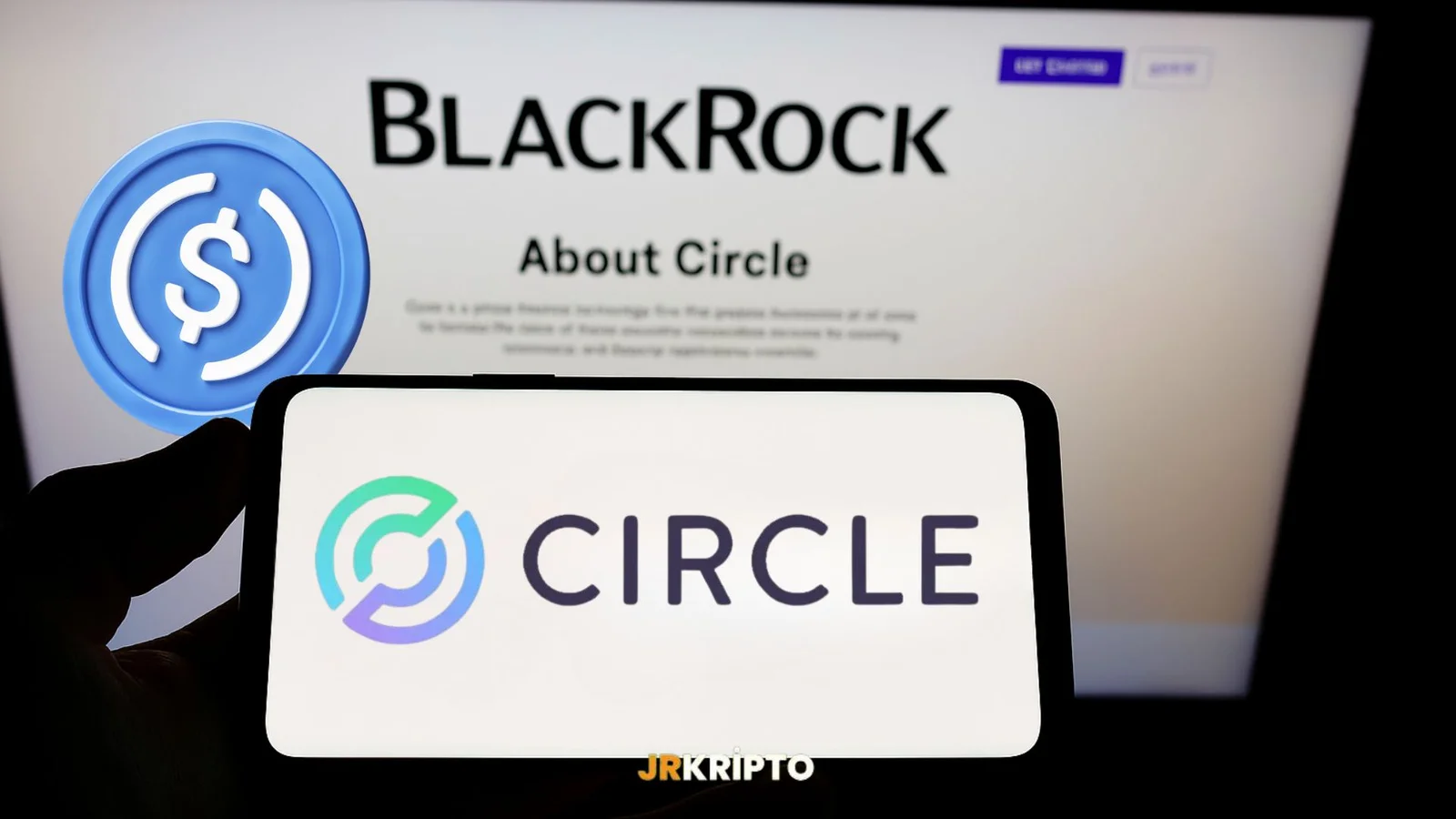
Bybit Opens the Door to Europe with MiCA License
As Regulatory Compliance Becomes Increasingly Critical in the Crypto Market, Bybit Makes a Strong Move in EuropeAs regulatory compliance becomes ever more vital in the cryptocurrency market, leading exchange Bybit has made a bold move in the European market. By obtaining a MiCA license from the Austrian Financial Market Authority (FMA), Bybit has earned the right to offer crypto services across the 29 countries of the European Economic Area (EEA).This license is not just a legal green light; it’s also a clear sign of how much importance Bybit places on Europe within its global growth strategy. In this context, the company also announced the opening of its European headquarters in Vienna.MiCA License: Legal Access to a 500-Million-Person MarketMiCA (Markets in Crypto-Assets) is the European Union’s first comprehensive regulatory framework for crypto assets. Introduced in September 2020 and approved in 2023, this regulation aims to enhance consumer protection, reduce the risk of financial crimes, and bring clarity to the industry.Bybit’s MiCA license allows the company to offer regulated and localized services across the EU. This translates to a potential user base of around 500 million people.Bybit CEO Ben Zhou commented on the move with the following statement:“Obtaining the MiCA license in Austria is a testament to Bybit’s compliance-first approach. We are actively pursuing global licensing efforts to ensure that our users can access our platform with the highest level of regulatory assurance.”Vienna Office: Not Just a Hub, but an Ecosystem InvestmentBybit’s new headquarters, which will manage the company’s European operations, will be based in Vienna. However, this office will be more than just a regional management center. The company plans to employ over 100 professionals in Austria and invest in the local crypto ecosystem.Bybit Europe CEO Mazurka Zeng emphasized that the Vienna office will also serve as a community hub. Through its Blockchain for Good Alliance, Bybit aims to collaborate with universities and local communities to promote regional innovation.Global Vision: Expansion in Asia, Security Under ScrutinyWhile Bybit strengthens its presence in Europe with the MiCA license, it is also signaling expansion in the Asian market. CEO Ben Zhou recently met with Vietnam’s Finance Minister to discuss establishing a legal framework for digital assets and setting up a national digital asset exchange in the country.However, the company still faces challenges ahead. A few months ago, Bybit experienced a major security breach resulting in the withdrawal of over $1.4 billion in assets. This incident highlighted the need for the platform to implement even stricter measures in terms of user security and technological infrastructure.Compliance in Europe, Ambition GloballyBybit’s MiCA license from Austria marks a new chapter for crypto exchanges in Europe. The company’s Vienna office stands out not just as an operational base, but as a strategic investment hub. Through education, local partnerships, and regulatory collaboration, Bybit is positioning its presence in Europe not merely as an "office," but as an ecosystem investment.With a similar vision guiding its path in Asia, the company seems determined to build a global profile that is both regulation-friendly and innovation-driven.
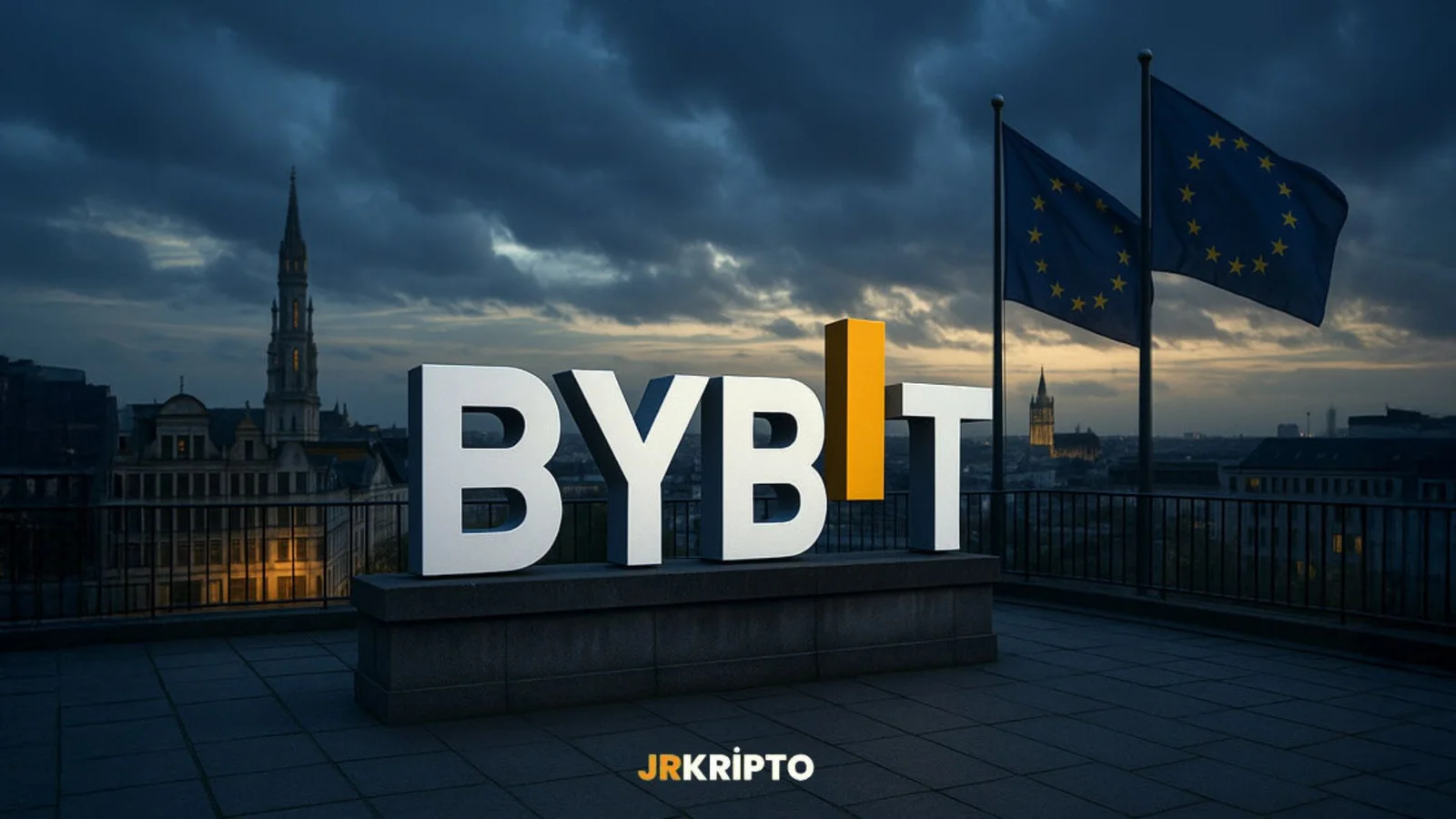
Pakistan Officially Announces Bitcoin Reserve
2025: A Year of Bold Governmental Moves in the Crypto World — Pakistan Launches Its Strategic Bitcoin ReserveThe year 2025 is shaping up to be a period of significant governmental strides in the world of cryptocurrencies. Among the most notable moves comes from Pakistan. On May 28, 2025, during the Bitcoin 2025 Conference held in Las Vegas, the Pakistani government officially announced the establishment of its own Strategic Bitcoin Reserve.The announcement was made by Bilal Bin Saqib, Chairman of the Pakistan Crypto Council and Special Advisor to the Prime Minister on Crypto and Blockchain. Saqib’s statements represent not just a new economic vision, but a clear break from the past:“Pakistan is no longer defined by its past. It is being reborn as a forward-looking hub of digital innovation, empowered by its youth, sharpened by necessity, and led by a new generation of tech-savvy statesmen.”National Bitcoin Wallet and a No-Sell CommitmentThis reserve will be held in a national Bitcoin wallet established by the government. Saqib emphasized that these Bitcoins will not be sold and carry no speculative intent:“This is not a trade; it’s a strategic asset plan. We will hold these Bitcoins and never sell them.”This statement signals that the government views digital assets not as vehicles for short-term profit but as instruments of long-term economic security and technological strategy.Inspired by the U.S., Acted on by PakistanPakistan’s decision came shortly after U.S. President Donald Trump announced plans to establish a strategic Bitcoin reserve in March 2025. Bilal Bin Saqib noted that Pakistan was directly inspired by this move. The similarity highlights how nation-states are increasingly incorporating digital assets into their reserve strategies.It also marks a sharp departure from Pakistan’s previously cautious stance on cryptocurrencies. A government that once said “crypto will never be legal” has now transformed into a nation establishing a Bitcoin reserve on the global stage.2,000 Megawatts of Energy Allocated for Crypto MiningIn addition to the strategic reserve, the Pakistani government announced plans to allocate 2,000 megawatts of surplus electricity for Bitcoin mining and high-performance AI data centers. This initiative serves three primary goals:Utilizing idle energy resourcesCreating technology-driven employmentAttracting foreign investmentDue to high electricity tariffs and the widespread use of solar energy, the surplus is now being turned into an advantage. With this step, Pakistan aims to become a new regional hub for mining and data center investments.Digital Asset Authority and a New Wave of RegulationThe Pakistani government is not only investing in reserves and infrastructure but also taking steps to build a comprehensive regulatory framework. The Ministry of Finance has approved the establishment of a new institution called the Pakistan Digital Asset Authority (PDAA). This authority will license and regulate:Cryptocurrency exchangesDigital asset custody servicesTokenization platformsDeFi applicationsFinance Minister Muhammad Aurangzeb stated that the PDAA will also play an active role in areas such as blockchain-based debt instruments, tokenization of state assets, and the development of decentralized finance infrastructure.International Partnerships: Binance Founder Joins as AdvisorThe Pakistan Crypto Council is placing significant emphasis on global collaboration during this transformation. Among the Council’s advisors is Binance co-founder Changpeng Zhao. Appointed as a strategic advisor in April 2025, Zhao has since been supporting Pakistan in blockchain infrastructure, crypto regulation, and the adoption of digital assets.From Crypto Rejection to Global Crypto PlayerPakistan’s establishment of a strategic Bitcoin reserve is not merely symbolic—it marks a structural policy shift. Crypto-friendly regulations, the integration of national energy resources with new technologies, and comprehensive regulatory initiatives all have the potential to position Pakistan as a regional digital asset hub.Once known for its bans, Pakistan now wants to be recognized for its Bitcoin reserve.

Fed Minutes 2025: Cautious Monetary Policy
The Fed Holds Rates Steady, but Inflation Persists, Unemployment Concerns Grow, and Markets Remain DirectionlessThe Fed kept interest rates unchanged, yet inflation isn't coming down, concerns over unemployment are rising, and markets are struggling to find direction. Economic data remains strong, but the future is still unclear. After every meeting, we see the same picture: uncertainty and efforts to read between the lines.Why Did the Fed Keep Rates Steady?At the Federal Open Market Committee (FOMC) meeting held on May 6–7, 2025, the Fed decided to keep the federal funds rate unchanged in the 4.25%–4.50% range. But why?In fact, there are several clear reasons behind this decision, all of which are directly tied to today’s economic vulnerabilities:Inflation Remains PersistentThe Fed’s main focus is the risk that inflation may not be transitory, but rather persistent. According to the minutes, price pressures may last longer than expected. This signals a cautious approach and a reluctance to act hastily on monetary policy.Current Policy Is “Moderately Restrictive”Fed officials believe that the current policy stance is applying a measured amount of pressure on the markets. The goal is to slow down the economy in a controlled manner, without completely stalling it.Waiting for ClarityThe minutes indicate that economic uncertainty persists. Due to unclear trade policies, global influences, and mixed data, the consensus is that policy changes should be avoided until a clearer picture emerges.Inflation and Unemployment: The Fed’s Two Main Risk FocusesThe minutes reveal that the Fed is not only concerned with interest rate decisions but is also closely monitoring two major risks in the economy: persistent inflation and potential weakness in the labor market.Inflation Isn’t Falling—It’s StabilizingWith inflation still well above the annual 2% target, it remains a top priority for the Fed. The minutes emphasize that price increases may prove more persistent than expected. As a result, monetary policy decisions are being made cautiously and over time.Is the Labor Market Starting to Crack?The economic slowdown may begin to impact the labor market. Fed officials are raising the possibility of a potential rise in the unemployment rate. This shows that policymakers are taking into account not just price stability, but also labor market balance when making decisions.Cracks in the U.S.’s Safe-Haven Status?One of the most striking points in the Fed minutes was the concern over the U.S.’s role in the global financial system. There are growing questions about how current trade policies might impact this status.Trade Policies Are Creating UncertaintyFed officials have noted that the recent protectionist trade policies could negatively impact investor confidence. A shift in global trade flows could damage the perception of U.S. assets as a "safe haven."What Happens if Global Confidence Erodes?If the U.S.—traditionally the go-to destination during times of crisis—loses this position, capital flows may shift to other regions. This could increase volatility in the dollar, stock, and bond markets. The consequences would be significant not just for the domestic economy, but for global economic balances as well.What It Means for Investors: What’s Next?The minutes show that the search for clarity regarding the economic outlook continues and that a cautious stance will persist. In this environment, there are several key points that investors should pay attention to:Five Key Considerations During Uncertainty:Closely Monitor Monetary Policy SignalsThe minutes show that the Fed’s decisions are data-dependent. This makes statements, data releases, and press conferences even more important.Keep Portfolio Diversification a PriorityIn times of high economic uncertainty, it’s safer to diversify investments rather than focusing on a single asset.Track Employment and Inflation Data CarefullyThese two indicators are among the most decisive in shaping the Fed’s decisions. Upcoming data will be critical in determining market direction.Be Prepared for the Impact of Geopolitical DevelopmentsFactors such as foreign trade, election uncertainties, and global relations can trigger market volatility.Avoid Short-Term Speculative Moves as Risk Perception RisesDuring periods of high volatility, it is more strategic to take a medium-to-long-term approach.The Fed’s Message Is Clear: “Wait and See”The FOMC minutes show that the Fed is maintaining its cautious stance and will continue making data-driven decisions. Inflation remains a key issue to keep under control, while the risk of rising unemployment is being closely watched. Trade policy’s global impact is emerging as another area of vulnerability.Therefore, any upcoming steps will require a multi-layered strategy that considers both domestic dynamics and global effects. While market direction remains unclear, the Fed’s message is unmistakable:Until the economic picture becomes clearer, staying cautious will remain the primary policy approach.
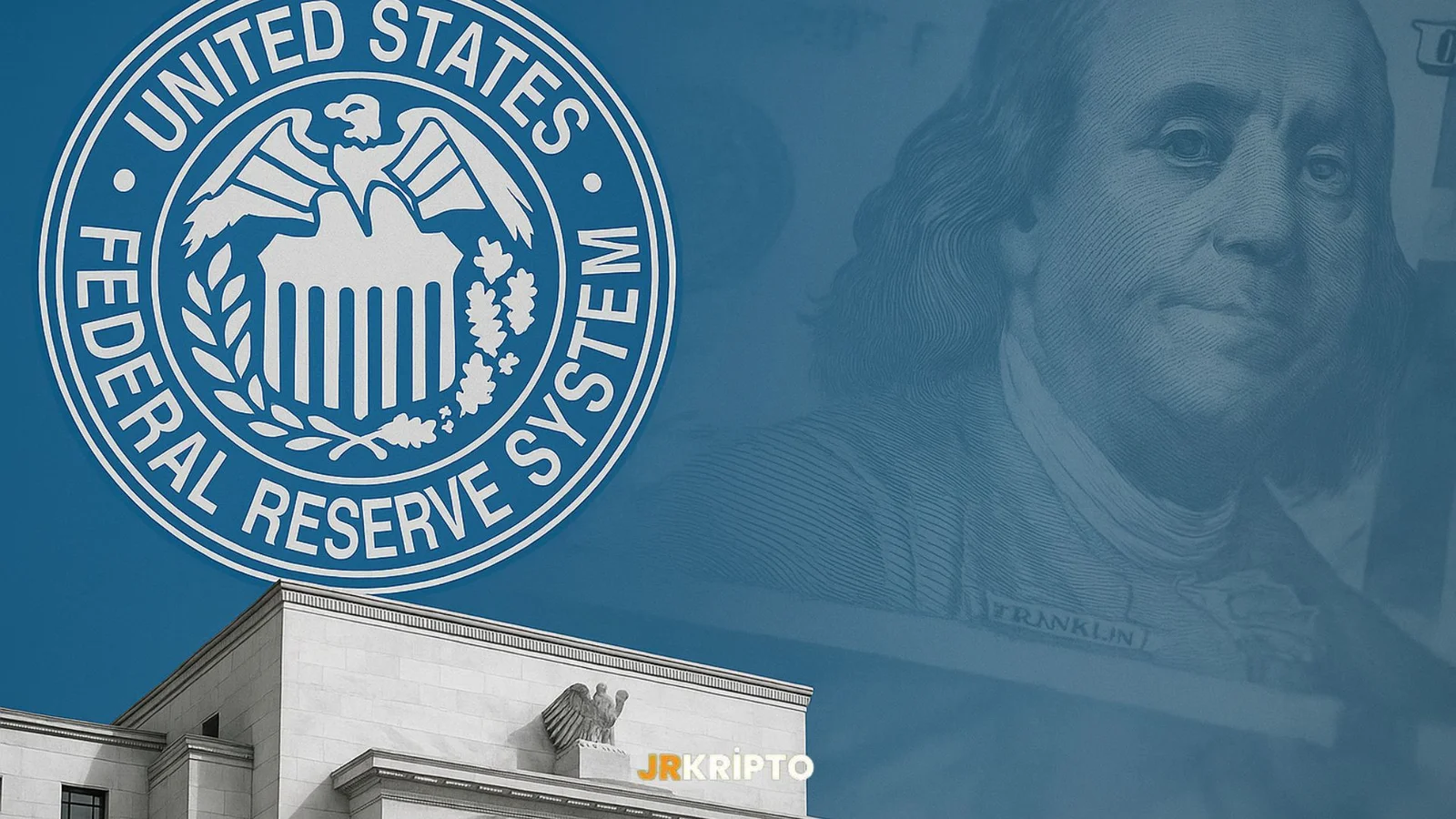
The Big Incentive for Crypto Investors from Florida: Capital Gains Tax Is Being Reset
Florida is preparing to offer a major tax advantage for those investing in cryptocurrency. The state legislature has introduced a bill that eliminates state-level capital gains tax on profits earned from various assets, including Bitcoin, XRP, and stocks. This move could make Florida much more attractive for both individual investors and crypto companies.What Does the Law Bring?According to the bill, investors will not pay any state tax in Florida on profits earned from digital assets like Bitcoin or XRP. For example, if a crypto investor sells Bitcoin for $10,000 and makes a $2,000 profit, the state of Florida will not claim any tax on that gain. However, this regulation only covers state taxes; federal-level taxes will still apply.This tax cut aims to increase interest in crypto assets and position Florida as a hub for digital finance. Attracting investors with crypto-friendly policies is seen as a strategic move for the state, which seeks to support technological innovation.Politics and Economy Hand in HandThe bill is backed by the administration led by Republican Governor Ron DeSantis. This step also aligns with Donald Trump’s increasingly crypto-friendly stance. Florida already has no personal income tax. Now, with the addition of eliminating capital gains tax, Florida stands out for investors seeking tax advantages.According to experts, this development may not be limited to Florida alone. Other states could consider similar incentives, and new reforms at the federal level may also be brought to the agenda.A New Beginning for CryptoFlorida’s move is not just a tax cut—it is also a reflection of growing confidence in the digital economy. This step, which concerns both individual investors and institutional companies, could open a new chapter for the acceptance of digital assets within the U.S. If the bill becomes law, Florida could become a major hub for the crypto economy, not only nationally but on a global scale.
